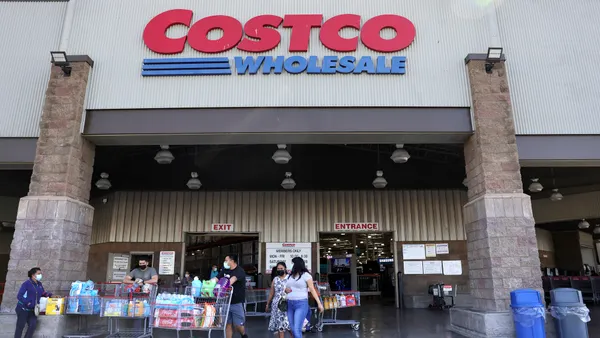The following is a guest post from Katie Jansen, chief marketing officer of AppLovin.
The promise of a universal mobile wallet was intriguing. One day, we’d all leave our wallets at home and use our smartphone to pay for everything from groceries to train rides. Payments, in-store and otherwise, would be a snap, and tech giants, such as Apple and Google, would corner the market on yet another booming mobile market.
But in reality, we’re far from a universal mobile wallet. A recent study from JPMorgan and Forrester found that the percentage of consumers who prefer to pay with mobile wallets actually dropped from 15% in 2016 to 14% in 2017, and just 1% of Black Friday payments in 2017 were made using a mobile device, according to Business Insider.
That said, the same research from Business Insider also shows consumers prefer retailer-branded wallets. This makes sense, as the adoption of mobile wallets like Apple Pay has been slow and retailers have seen success with their own mobile payments systems. For example, Starbucks has accepted mobile payments since 2011 and Walmart launched Walmart Pay two years ago. Target recently rolled out a mobile wallet of its own, choosing to create its own payment system rather than update point of sale terminals to support universal mobile wallets.
But why are walled-garden mobile wallets from retailers outperforming the universal wallet the market was dreaming of? Let’s take look at how we ended up here.
Chicken or the egg?
The universal wallet has a tricky adoption problem: Consumers only want to use it if it’s accepted everywhere, and merchants only want to accept it if it’s a common form of payment for consumers. Fortunately, retailers with apps have an existing customer base to work from, so they can take mobile payments to market right away, thereby circumventing many of the headaches of adoption.
This offers retail marketers several perks, including a cache of known user behaviors, built-in brand trust, pre-existing permissions for engaging, known metrics around customer lifetime value and a significantly smaller cost of acquiring mobile wallet customers, for starters.
But just how great of an advantage do all of these factors create for retailers? According to Bloomberg, Walmart Pay is set to surpass Apple Pay in terms of active users by the end of 2018. While that’s pretty astounding on its own, it’s even more interesting when you consider Apple Pay launched more than a year before Walmart Pay. How does the biggest technology company in the world get outdone by Walmart?
One reason is that most universal mobile wallets out there, including Apple Pay, rely on near field communications (NFC) terminals to work. The problem is only about a third of retail stores currently have them. Going back to our initial point, consumers don’t want to adopt a system that’s not pervasive and easy to use, and retailers don’t want to invest in adding in-store technology unless there is a significant demand for it.
Another issue with NFC is that less expensive smartphones aren’t always NFC-capable, and what retailer wants to limit their payments capabilities based on their customer’s choice of phone?
Retailer-branded mobile wallets are more rewarding
Rewards programs are one of the biggest driving forces for mobile wallet adoption according to Bloomberg, Business Insider and Forbes. But why are rewards and wallets such a great match? It has to do with the original promise — a mobile wallet can replace everything your normal wallet does. This includes making payments (debit and credit cards), getting you into places (tickets and membership cards), and making sure you can collect discounts and rewards for being a good customer (loyalty cards, travel points, etc.).
Retailer-branded mobile wallets make a lot of sense for customers who frequent specific stores. Since they’re already rewards members, they can use branded wallets to pay, earn rewards points and update their shopping profiles (with device and location data). Retailer-specific mobile wallets also allow retailers to send quick in-app messages for promotions and re-targeting.
If I’m not yet a member and I use my branded wallet to pay, you can push me a message asking me to join your loyalty program. And with the click of a single button, you can process my transaction, enroll me in the program and push me a mobile coupon for use on my very next in-store or in-app purchase.
Ultimately, the link between the payment and the rewards experience is seamless, thereby removing friction from the enrollment and rewards processes for both consumers and retailers. This makes retail-branded wallets easier to use than universal wallets, and that’s why they are being adopted at a faster rate.
Checking out
Will Apple and Google eventually catch up to the market? Or will fintech companies like Venmo and Docomo offering technically ubiquitous solutions of their own beat the giants to the punch? Perhaps the globe’s regional players such as MobiKwik or AliPay, will make their way from China and India to take the West’s mobile payments markets by storm.
Certainly mobile payments themselves will only continue to become more pervasive. Juniper Research reports 53% of global transactions at retail points of sale will be contactless within five years, compared to just 15% in 2017, indicating more than 350% growth.
However future markets take shape, for the time being, retailers have established competitive advantages in driving the consumer’s adoption and use of mobile wallets by creating payments and reward experiences that are both pleasing to the consumer and profitable for the brand.













